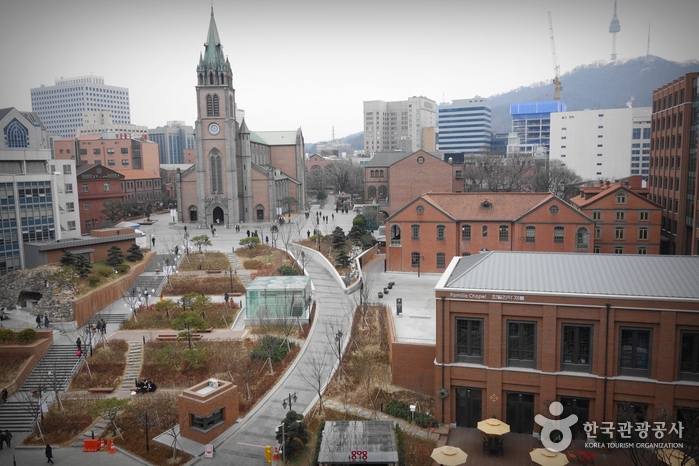CheongKwanJang - Jongno 4(sa)-ga Branch [Tax Refund Shop] (정관장 종로4가)
2.2Km 2024-04-22
Gwangnim Bldg., 195, Jong-ro, Jongno-gu, Seoul
-
The Handsome Tommy Hilfiger - Myeong-dong Branch [Tax Refund Shop] (한섬 타미힐피거 명동)
2.2Km 2024-04-18
11, Myeongdong 6-gil, Jung-gu, Seoul
-
Tonymoly - Euljiro 3(sam)-ga Station Branch [Tax Refund Shop] (토니모리 을지로3가역점)
2.2Km 2024-06-27
B3-14, 131, Eulji-ro, Jung-gu, Seoul
-
Hwanggeum Mokjang Myeongdongseongdang (황금목장 명동성당)
2.2Km 2024-03-11
23, Myeongdong, 10-gil, Jung-gu, Seoul
+82-2-318-2426
Located in Myeongdong, Hwanggeum Mokjang Myeongdongseongdang is a Korean barbecue restaurant in Myeongdong. It is a popular place for locals and tourists alike as it serves high-quality beef and pork barbecued in the Korean style. Other dishes such as samgye tang (ginseng chicken soup), bulgogi, naengmyeon (cold buckwheat noodles), and many other dishes are also a must-try.
Myeongdong Cathedral (서울 명동성당)
2.2Km 2022-12-27
74, Myeongdong-gil, Jung-gu, Seoul
Myeongdong Cathedral is the Church for Archdiocese of Seoul and was also the birthplace for the Roman Catholic Church community in Korea. The church houses the remains of several individuals: Bishop Laurent Joseph Marie Imbert (1796-1839), and priests Peter Simon (1803-1839), James (Jacques Honor Chastan, 1803-1839) and Pourthie Jean Antoine Charles (1830-1866) and four martyrs.
Myeongdong Cathedral is located in downtown Seoul and tourists frequently come and visit the place. Near the cathedral are other tourism spots such as Namsangol Hanok Village preserving Korean traditional houses, N Seoul Tower overlooking Seoul and Namdaemun Market, a traditional market with a wide variety of food and goods.

![CheongKwanJang - Jongno 4(sa)-ga Branch [Tax Refund Shop] (정관장 종로4가)](http://tong.visitkorea.or.kr/cms/resource/92/2878192_image2_1.jpg)
![The Handsome Tommy Hilfiger - Myeong-dong Branch [Tax Refund Shop] (한섬 타미힐피거 명동)](http://tong.visitkorea.or.kr/cms/resource/47/2888847_image2_1.jpg)

 English
English
 한국어
한국어 日本語
日本語 中文(简体)
中文(简体) Deutsch
Deutsch Français
Français Español
Español Русский
Русский